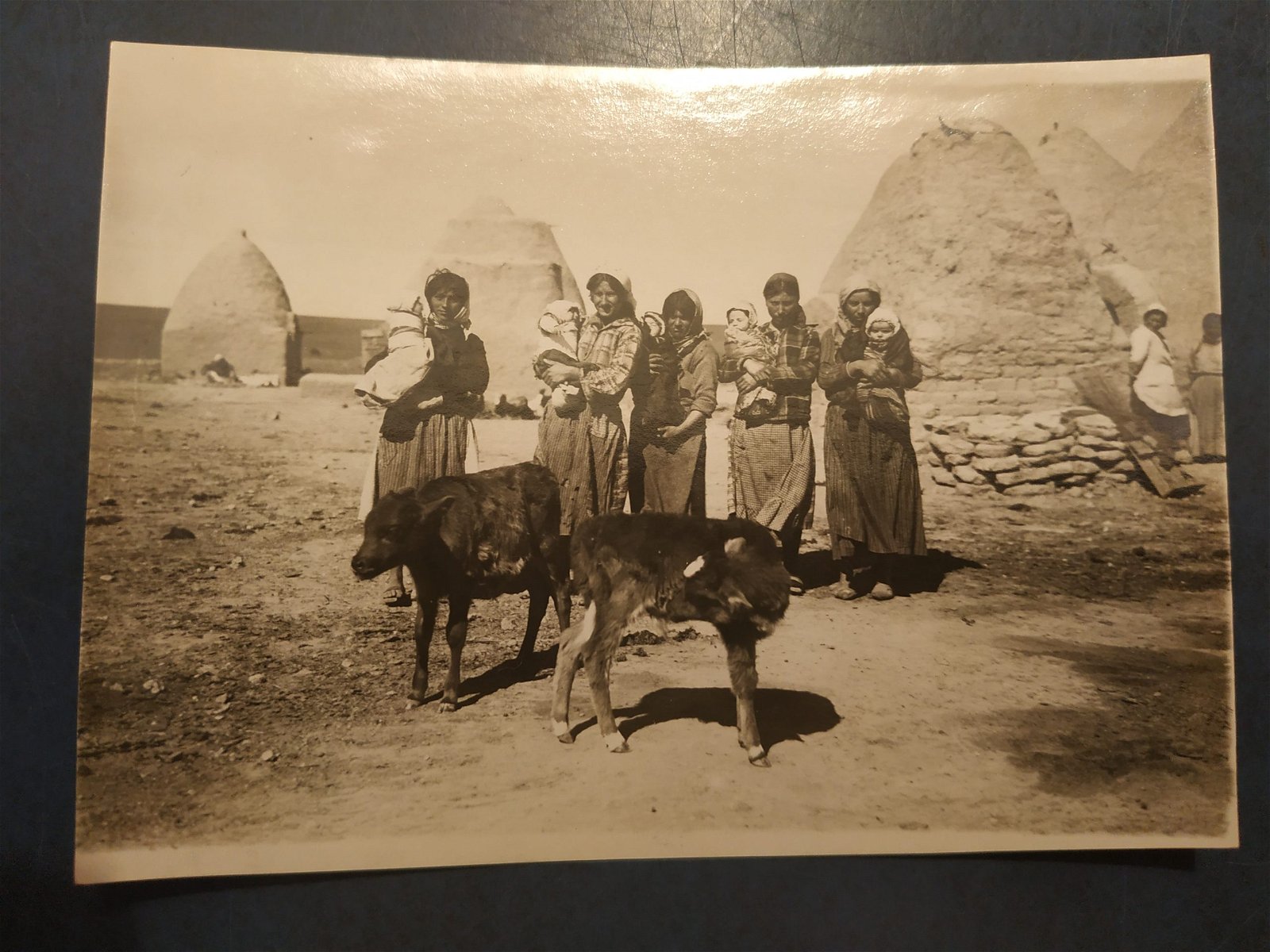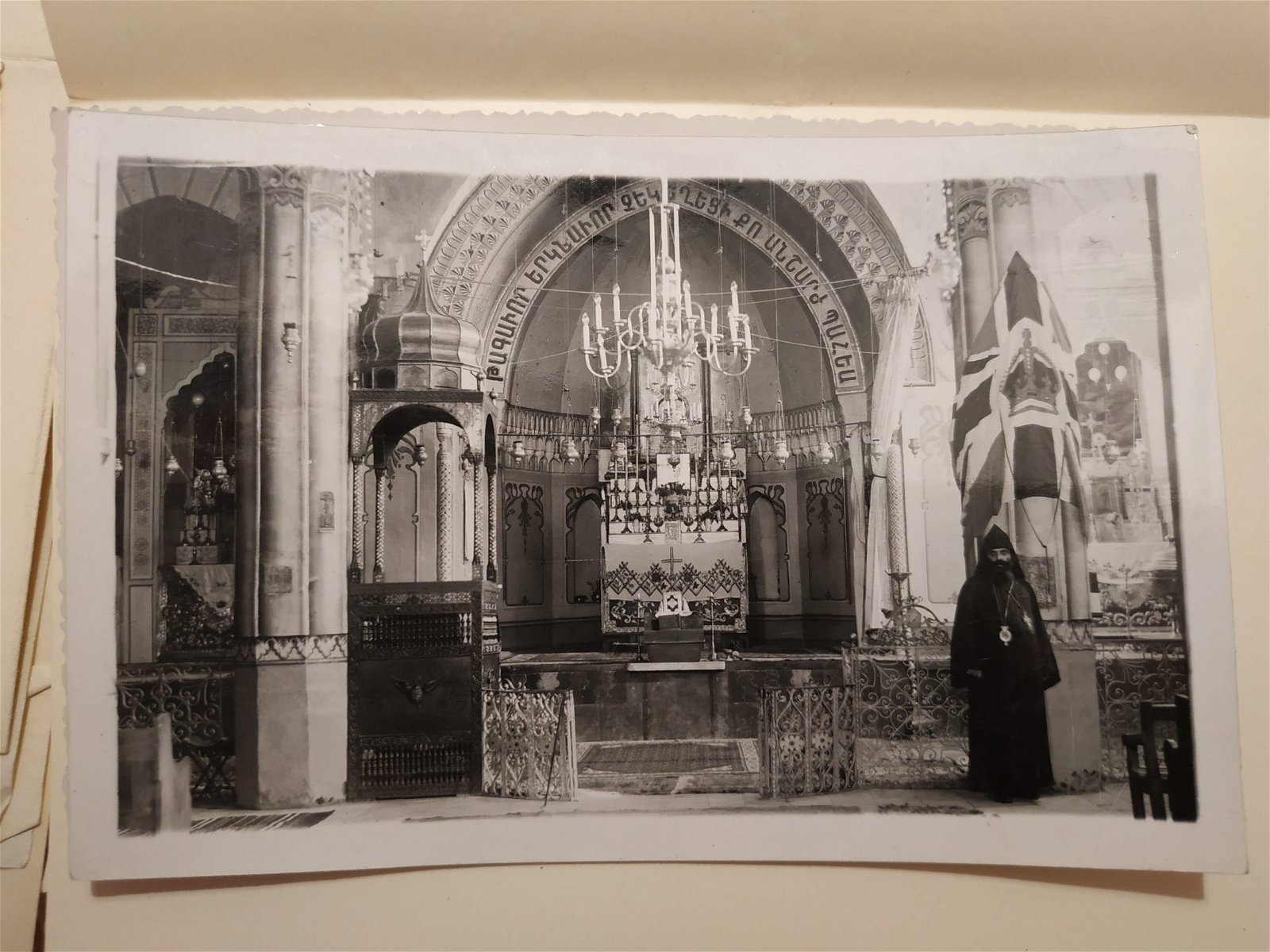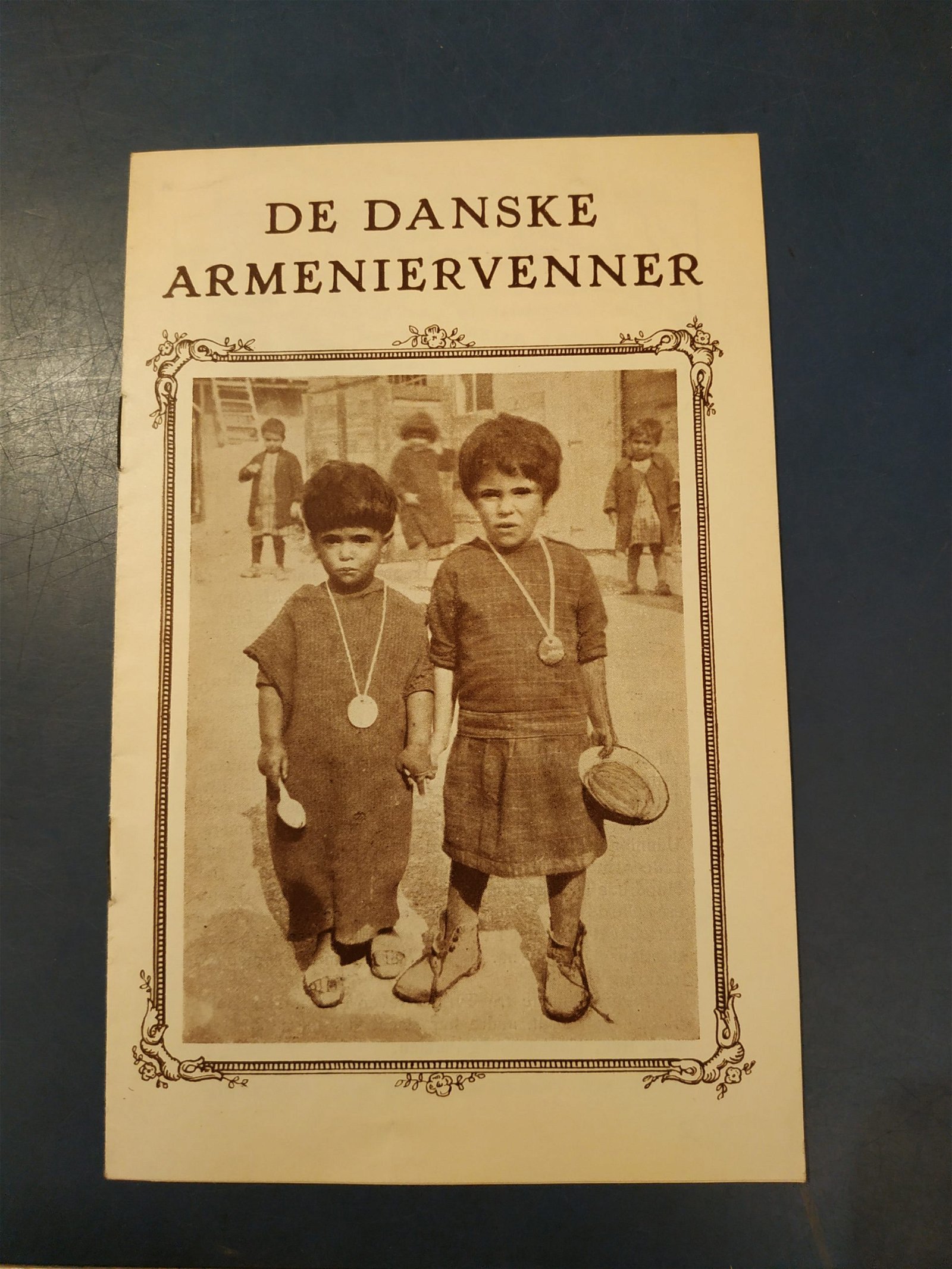
In archives found around Lebanon, Syria, Armenia, Denmark and Switzerland, observers can find photographs depicting the Armenian way of life in Syria between the 1920s and 1940s following the genocide. However, very few people know that one of the authors of these pictures is Leopold Gaszczyk—a Pole who devoted his life and work to help the Armenian cause and communities in the homeland and diaspora.
Early Years
Leopold Józef Gaszczyk was born in 1896 in a small town called Bielsk (Bielsko-Biała, Poland). Bielsk is located in the historic region of southeast Silesia, which was part of the Austro-Hungarian Empire in the 19th century. Indeed, Bielsk was a charming city, known as “Little Vienna” due to the widespread and beautiful 19th century architecture themes. As a typical city of Silesia, it was a multicultural and multi-ethnic town, home to nationals of different European nations: Germans, Poles, Czechs and Jews. Although Gaszczyk grew up in such a multicultural society, the years of his youth covered a period of rough times for the Polish raison d’être. Indeed, Poland at that time had not existed on the European political map yet, and its territories were part of the surrounding countries (i.e. the Austro-Hungarian Empire, the Russian Empire and the German Empire).
After the outbreak of World War I, Gaszczyk, a national of the Austro-Hungarian Empire and a subject to Kaiser Franz Josef II, was conscripted to military service in the Austro-Hungarian army. In the army, he was trained as a medic, but he also fought on the Eastern Front and in Italy. At the end of the war, he was sent to the Ottoman Empire and served as an “offizier-aspirant” in the Austrian Orient Corps.
In 1918, he received an order to stay at the outpost of Aleppo-Damascus, where he worked as a translator. During his service there, for the first time in his life, Gaszczyk experienced first-hand the Ottoman extermination policy toward the Armenians, which was established since the outbreak of the war. Along the Berlin Baghdad railway line and between the Der Zor desert and Euphrates River, the Ottomans built a network of concentration camps for Armenians who survived the death marches.
After the end of the war, Gaszczyk did not go back to Bielsk, but instead, being a citizen of the reborn Poland, he decided to stay in the Ottoman Empire and work for the Near East Relief—an organization that helped Greek, Assyrian and Armenian refugees. Thanks to his driving skills, Gaszczyk assisted with the evacuation of Greeks and Armenians from towns like Sivas, Sasun, Harput and Kayseri. At that time, he worked with Professor Johannes Lepsius and collected and established evidence of crimes committed against Armenians at the time of the war by the Ottoman Empire.
Aleppo and Karen Jeppe

Kavoukdjian, Misak Melkonian, Lucia Melkonian, Hani Gaszczyk), Aleppo 1934, Armeniervennen, 5/6 (1934):1
In 1923, Gaszczyk arrived in Aleppo, where he was employed by the mission initiated by the Danish missionary Karen Jeppe. Jeppe worked for the secular organization “Danish Friends of Armenians.” Between 1903 and 1918, she participated in missionary work within the territories of the Ottoman Empire. During the Great War, Jeppe experienced the horrors of the Armenian Genocide which were initiated in Urfa. In 1921, she was appointed as a secretary of the Commission for the Protection of Women and Children in the Near East under the auspices of the League of Nations. In the same year, Jeppe established a humanitarian mission in Aleppo in collaboration with “Danish Friends of Armenians.” Indeed, the selection of the city was not accidental. In fact, Aleppo was considered one of the biggest Armenian refugee camps in the Syrian territory. It is said that the city and its surrounding regions hosted around 100,000 Armenian survivors of concentration camps. The number of Armenian refugees in the city continued to grow because of the anti-Armenian policies of the Ottoman Empire and later in the Republic of Turkey.

Jeppe’s mission concentrated on providing aid to women and children who were enslaved in Arab, Turkish and Kurdish households. It is believed that approximately 20 to 30 thousand Armenian women and children were victims of kidnapping and human trafficking and were kept in Muslim households. Those people were often sexually abused, forcibly converted and outright deprived of their national identity. Jeppe believed the mission work should be focused on bringing those people back to Armenian society. But this complex and challenging task could be realized not only by helping them escape their oppressors, but through physical and mental healthcare, as well as supporting their social and economic needs. The head office of the mission was established in Aleppo, and the complex of the building consisted of a reception house (where every newly-arrived Armenian was registered), a school, church, hospital, kitchen, a bathing area and several workshops and living areas. Due to the support of a local Bedouin for Jeppe’s work, several Armenian villages were built in and around the city, which later became Armenian colonies.

Work in Mission
On April 21, 1923, Jeppe wrote in her diary: “[…] language skills and capitulation play a big role here, so I find it necessary to have a European here during the time I am away. I have also found one such, Pole – Leopold Gaszczyk [around] 27-30 years old, well versed in the Orient, fluent in language, highly mannered and of solid character.” Indeed, Gaszczyk worked in the mission as a secretary, or as Jeppe enjoyed calling him, “a diplomatic attaché.” He was responsible for leading the office, conducting correspondence, establishing relations with local authorities and representatives of western countries, as well as supervising workshops. Due to his driving skills, he was called “the special driver of Karen Jeppe.” He was also engaged in preparing the Aleppo Protocols—a collection of written testimonies with the portrait photography of survivors who arrived at the mission. Nowadays, the Aleppo Protocols are an established evidence of the genocidal nature of the crimes committed by the Ottomans against the Armenians at the time of World War I. In the following years, he established records of the Sahakian School children. These records consisted of pictures of children, their short biographies and correspondence with donors who provided them with financial support and assistance. In these records, we infer that Gaszczyk was personally involved in securing funds to help the poorest of Armenian children and their families.

Photography
Besides the portrait photography taken for the Aleppo Protocols and records of the Sahakian school, Gaszczyk was assigned the responsibility of visually documenting the mission’s work in and around the city of Aleppo. Indeed, among these photographs, we find evidence of the Armenian Genocide: girls with tattoos and scarfs after being tortured, as well as women and children who escaped from enslavement in Muslim households. Gaszczyk also depicted mission work: running a hospital, children at school, serving meals and embroidery workshops. Moreover, he photographed daily life in the camp in Aleppo: camp buildings, interior of shanty houses, everyday activities of women and childcare, preparing meals, doing laundry, mending clothing, spinning, as well as the activities of local craftsmen and sellers. Gaszczyk also captured the Armenian way of life in colonies: building new settlements, cooperating with local Arabs, cultivating the soil, raising livestock, farming and educating children. In his free time, Gaszczyk photographed Syrian scenery: landscapes, historical monuments and panoramas of Aleppo. He developed photographs in his office at the mission. Very often, Gaszczyk signed his photographs on the back as “Photo Leopold/Alep (Syrie)”.

Gaszczyk’s photographs were presented in special albums for the purpose of collecting funds and donations for the mission’s various activities. Many of his photographs were also published in magazines as illustrations to articles concerning the mission’s wide variety of work.

Family
In her memories, Jeppe wrote about Gaszczyk “[…] he is an excellent help to me, I have no idea what I would have done without him.” Jeppe considered Gaszczyk a family member, the label she used to call all associates who worked in her mission. Gaszczyk’s wife Horome (Hermineh Attarian Gaszczyk) was also part of the staff. Horome was an Armenian widow from Urfa; she lost her husband at the time of the Genocide. Horome, together with Gaszczyk’s sister Johanna Paritsi, led an embroidery workshop at “Hayots Hogdoun” on Tilal Street in Aleppo. Gaszczyk was famous for being manually skilled; he drew patterns on a textile material which he photographed next to handmade embroidery items and oversaw their sale abroad.
Thanks to his wife, Gaszczyk spoke the Armenian language with an Urfa accent. He immersed himself in Armenian culture and celebrated Armenian traditions and feasts. They had one daughter named Hani; she became a French and English teacher at the Karen Jeppe School / Karen Jeppe Djemaran.
Later Years
Gaszczyk became director of the mission after Jeppe’s death in 1935. His new duties included securing funding for the mission’s different activities. He also wrote articles for “Armeniervennen” journal, in which his pictures were published. In 1947, Gaszczyk supervised the transition in possession of the mission’s Aleppo compound to the Armenian Apostolic Church. Meanwhile, he classified the mission’s archives and sent them to Denmark. After that, he worked as an English teacher in the Karen Jeppe School—the same school he helped establish. Unfortunately, the date of Gaszczyk’s death still remains unspecified.
Photography Today
What distinguishes Gaszczyk’s photographs is how his attitude affected the portraited person. His portraits presented their subjects with respect and dignity. The photographer did not try to shock the viewers by depicting human misery and tragedy, but rather tried to depict the tough condition without downgrading the human worth. It is a unique approach among foreign photographers. Moreover, the method of light projection and the framing of composition by the photographer indicate the artistic value of Gaszczyk’s photography. It’s quite possible that Gaszczyk’s method of photography was influenced by the famous photographer Vartan Derounian who also worked with Jeppe.
Nowadays, it is difficult to clearly indicate which type of photography belongs to Gaszczyk’s collection. On one hand, this collection can be classified as “humanitarian photography,” because it presents the mission’s activities, daily work, necessities, as well as appeals to collect funds. On the other, it can be conceived as “journalistic photography,” since the collection is published in newspapers to illustrate articles. Additionally, Gaszczyk’s photographs can also be considered as “social photography,” since the pictures document the social transformation of Armenian society as well the establishment of the Armenian Diaspora among the refugees in Syria. Finally, some classify the collection as a “documenting photography” as the pictures document the Ottoman extermination policy towards Armenians.
In the end, Gaszczyk’s work and photography are an essential part of Armenian history, as well as the history of Poles in Syria. His devotion to the issue of integrating the Armenian populations back to society is admirable and deserves to be remembered and spoken about.
We would like to kindly request from readers, if anyone is in possession of further information concerning Gaszczyk’s history, photography and family, please contact the author of this article.




Fascinating account on so many historical levels. The fate of the survivors, those that aided and worked with them, the photography that serves as a historical record. Thank you for your work in this area.
Pretty amazing. Many thanks for your work in this area. It’s incredible.
Very fascinating, thanks for publishing this. Love to find a book of the photographs if available.
Gaszczyk was a great man. Dziekujemy za fascynujacy material
Literally writing about this period right now and felt I needed some inspiration- thank you!
Misak Melkonian is my grandmother’s uncle. My grandmother knew Gaszczyk, her mother, Lucia, grew up in Gaszczyk’s house. Thank you for the great article.
The little girl sitting next to Hani, is Takouhi Melkonian, the adopted daughter of Misak and Lucia Melkonian.
Hello, Léopold Gaszczyk is my grand father, He died in our house 30 August 1973 in Lebanon. My Mother Hanny Gaszczyk/Minassian is still alive in France Paris. It will be great opportunity to meet Dr Dominika Macios. Dinah Minassian Paris France
Dear Dinah, I would love to visite Madame Hanny. I appreciate for contact. Could you write to me at my email address dominikamacios@gmail.com? Currently, I am in Beirut and I would love to light a candle on Leopold Gaszczyk’s grave.
Kind regards Dominika Maria Macios
I always liked Polish people, without realizing why.
Poland helping Ukrainians fleeing genocide, made me highly respectful of them.
Now reading how Mr Gaszczyk stepped up to run the Danish mission that my Father
benefited from gives me a stong feeling of love of Poland.
Hi Dominika,
Truly fascinating, thanks for publishing! The person in the upper right edge of the second photo, looking at Leopold Gaszczyk from the side, happens to be my grandfather. Both men certainly have worked together as my grandfather was running an armeninan orphanate near Kessab for the Lepsius Mission in the thirties of last century. Some photos I know from that time bear a handwriting that ressembles the on on the photos shown here.
Is there a place where to see Leopold Gaszczyk’s archives?